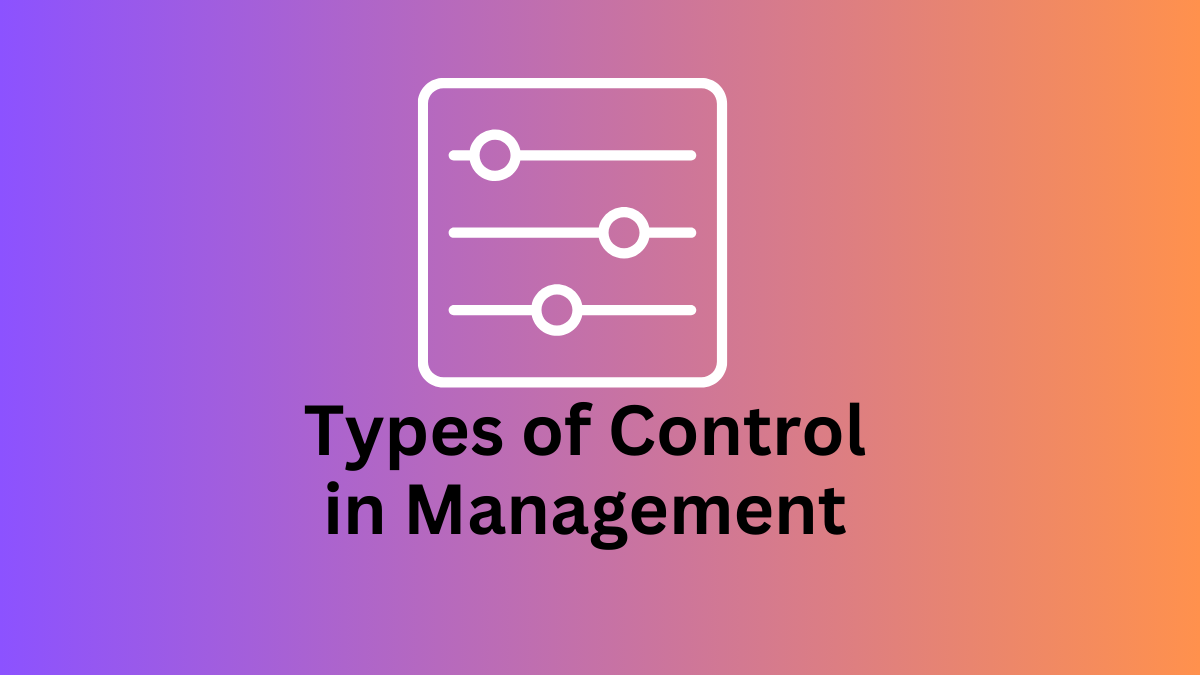Types of Control
Control in management can be broadly categorized into three types: pre-control, concurrent control, and post-control. Each control type serves a specific purpose and operates at different stages of the management process. Below is a brief analysis of these types of control:
Pre-Control (Feed-Forward or Preventive Control)
Pre-control is a proactive approach that focuses on preventing problems before they occur. It is future-oriented and aims to predict potential issues and take necessary measures to avoid them.
Pre-control is an essential part of effective management because it allows organizations to be proactive rather than reactive. By identifying and addressing potential issues before they affect operations, management can maintain a higher level of quality and efficiency. This approach is particularly valuable in environments where the cost of errors is high, such as in manufacturing or healthcare.
Purpose: The main objective of pre-control is to anticipate deviations and implement corrective actions before these deviations impact the system’s output.
Functionality: In pre-control, inputs and processes are monitored and adjusted as necessary before the output is produced. This control mechanism ensures that organizational plans, such as strategies, policies, and procedures, are effectively guiding the operations.
Examples: Organizational plans, like strategic planning, setting policies, and designing procedures, serve as pre-control devices. For instance, a company might establish stringent quality standards for raw materials to ensure that the final product meets the desired quality.
Concurrent Control (Real-Time or Steering Control)
Concurrent control is a real-time approach that focuses on monitoring and controlling ongoing activities. It involves directing the work of subordinates and making immediate adjustments to ensure that operations are proceeding as planned.
Concurrent control is vital for maintaining quality and efficiency during the execution of tasks. By providing real-time feedback and allowing for immediate corrective actions, this type of control helps ensure that operations stay on track and meet established standards. This approach is particularly useful in dynamic environments where conditions can change rapidly, such as in customer service or production lines.
Read More: Technological Barrier in Communication
Purpose: The goal of concurrent control is to detect and correct problems as they occur, preventing any significant deviations from the planned performance.
Functionality: Supervisors or managers continuously oversee activities, identify any issues that arise, and take corrective actions on the spot. This control mechanism ensures that processes are adjusted in real time to meet the desired standards.
Examples: Examples of concurrent control include quality control charts in manufacturing, inventory control systems, and production control mechanisms. For instance, in a manufacturing plant, quality control charts help monitor product quality in real time, allowing for immediate adjustments to the production process.
Post-Control (Post-Action or Feedback Control)
Post-control is a retrospective approach that takes place after an activity has been completed. It involves analyzing the performance results and taking corrective actions based on the deviations from the planned outcomes.
Read More: 10 Key Objectives of Controlling in Business
Post-control is crucial for continuous improvement and long-term success. By analyzing past performance and identifying areas for improvement, organizations can make informed decisions and enhance their future operations. This type of control is particularly valuable in environments where historical data can provide meaningful insights, such as in finance and human resources.
Purpose: The main objective of post-control is to learn from past performance and adjust future actions accordingly. It provides a feedback loop that helps management improve future performance.
Functionality: Post-control involves reviewing and analyzing the outcomes of completed activities, identifying deviations from the planned results, and implementing corrective measures to enhance future performance.
Examples: Examples of post-control include financial statement analysis, standard cost analysis, employee performance evaluations, and quality control assessments. For instance, financial statement analysis provides insights into an organization’s profitability, financial position, and cash flow, which can inform future financial planning and decision-making.
Read More: Psychological Barrier in Communication
Summary
Each type of control—pre-control, concurrent control, and post-control—plays a distinct role in the management process:
- Pre-Control: Focuses on preventing problems before they occur by monitoring inputs and processes.
- Concurrent Control: Involves real-time monitoring and adjustments to ensure ongoing activities meet the desired standards.
- Post-Control: Provides feedback based on past performance to inform future actions and improvements.
By integrating these control mechanisms, organizations can ensure that their operations are efficient, effective, and aligned with their strategic objectives. This comprehensive approach to control helps maintain quality, optimize resource utilization, and achieve organizational goals.
Read Next: Leadership in Management

Sujan Chaudhary holds a Bachelor in Business Administration (BBA) degree and is currently pursuing an MBA degree. He loves to share his business knowledge with the rest of the world.
